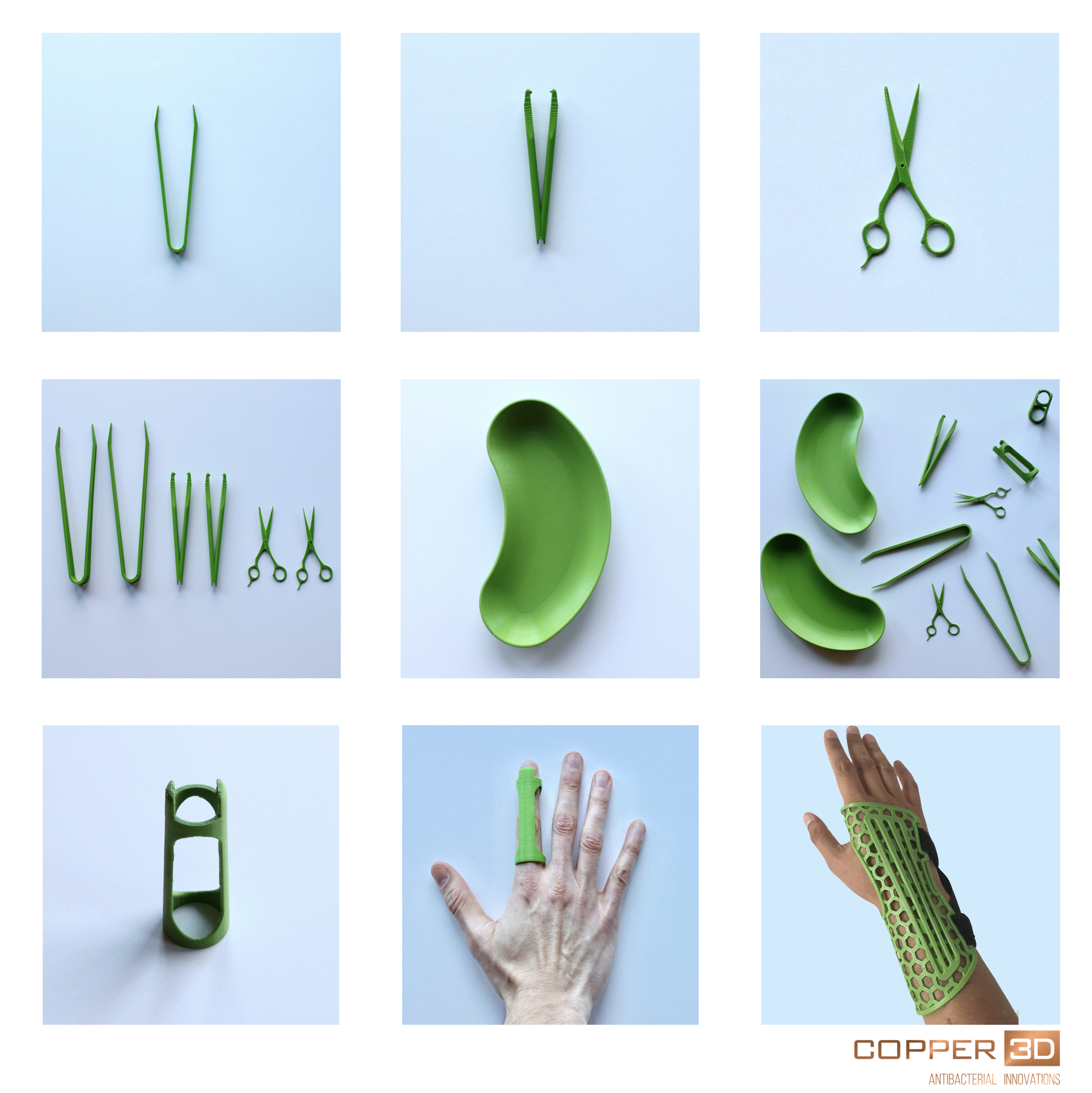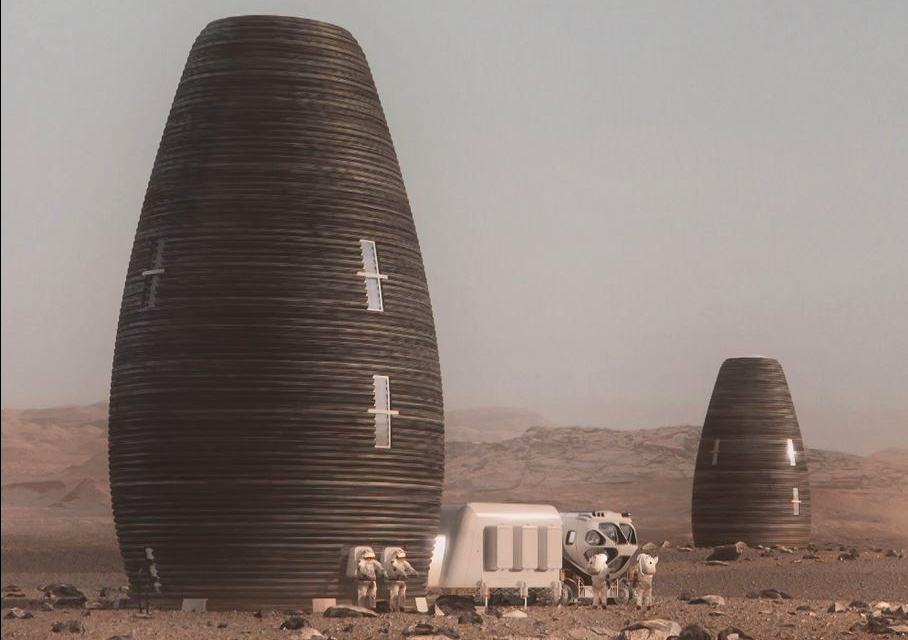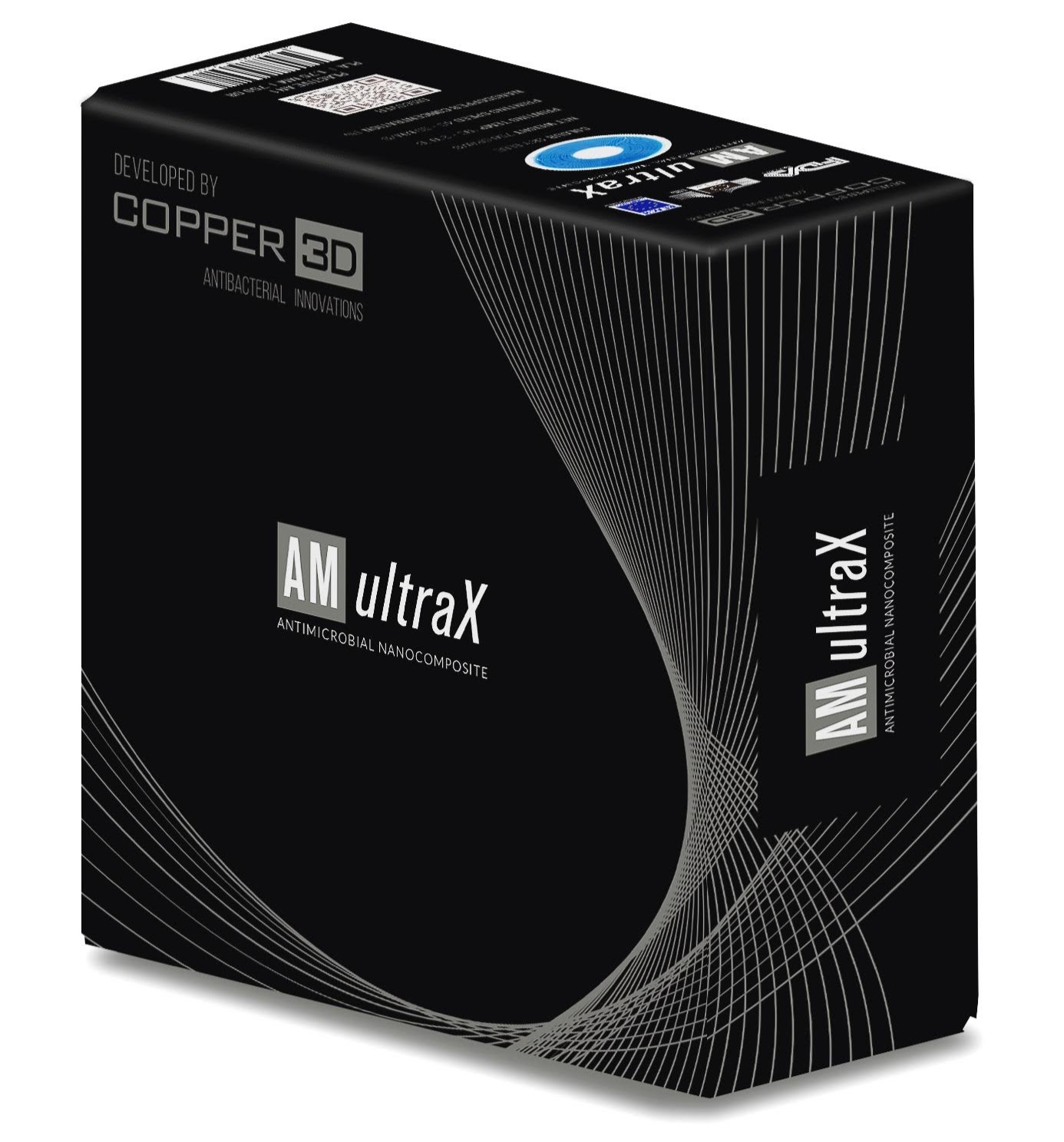The Antimicrobial Space Challenge is holding an Invent-a-thon to create off-earth 3D printed medical devices and tools. From October 21st – 25th, high school teams will gather at the University of Nebraska, to resolve the microbial risks in manned space habitations using Copper3D’s antimicrobial filament PLACTIVE.
As space facilities nurture dangerous bacteria and weaken astronauts’ immune system, these antimicrobial tools are essential in keeping the habitats clean and safe.
This event is sponsored by the University of Nebraska Medical Center. The co-organizing bodies include NASA Nebraska Space Grant, Copper3D, 3D LifePrints and the University of Nebraska Biomechanics Center.
Anti-Microbial Space Challenge
Promoting the application of 3D printing, the Antimicrobial Space Challenge seeks two categories of products: medical devices (e.g. finger splints, catheters) and space tools (e.g. pistol-grips, harness fixings). All submissions will be scored based on the following four criteria: Innovativeness / Uniqueness, Appropriateness for use in space, Design quality and 3D Printability (Quality, time, amount of material).
“This competition will be the trigger to excite people to design innovative devices to help overcome these challenges,” said Paul Fotheringham, one of the judges of the challenge and founder & CTO of 3D LifePrints.
“I truly believe that in order for mankind to become an interplanetary species we have to use technological advances such as [Copper3D’s antimicrobial filament] to ensure we are healthy enough to withstand the harsh challenges that space exploration brings,”

Microbial risks in manned space habitations
While manned habitations such as the International Space Station (ISS) have been in existence for over 20 years, deep space exploration missions and space colonization still proves challenging. One of the major hurdles is to ensure a clean and safe living environment in space stations and transport vehicles for prolonged habitation.
Facilities like the ISS harbor and nurture dangerous bacteria that are detrimental to humans. As a result, studies are starting to show that astronauts experience Immune System Dysregulation, a syndrome related to reduced immunity.
Furthermore, in microgravity conditions, commonly found bacteria such as Staphylococcus aureus have higher antibiotic resistance. This could cause a simple cut to become deadly on a space mission, which calls for preventive countermeasures to mitigate microbial risks.

3D printing antimicrobial materials
The use of 3D printing technologies is becoming more and more crucial for space exploration. The provision of in-space 3D manufacturing capabilities such as 3D printers from Made In Space has a number of additional benefits that include cost and time reduction. To deliver reliable service for bandwidth-intensive applications that power the space economy, SpaceX has launched the 3D printed satellite Telstar 19 VANTAGE last year.
Copper 3D, a 3D printing materials company, decided to tackle the microbial risks. Funded by the NASA Nebraska Space Grant, Copper 3D has developed antimicrobial 3D printing filament PLACTIVE for astronauts. The properties of Copper 3D antimicrobial materials have been tested in space environments.
“We believe that Antimicrobial 3D Printing will be fundamental in ensuring safer and successful space missions,” said Daniel Martínez Pereira another judge of the challenge and Co-founder & Innovation Director of Copper3D.
Potential applications of these antimicrobial materials include medical devices for use with deep space astronauts in sleep hibernation pods, temporary splints for fractures, personalized sanitation systems and personalised wearables with bio-sensors.

NASA. Photo via Copper3D.
Want to know more about 3D printing and aerospace? Subscribe to the 3D Printing Industry newsletter. Also, follow us on Twitter, and like us on Facebook.
Looking for a change of pace? Seeking new talent for your business? Search and post 3D Printing Jobs for opportunities and new talent across engineering, marketing, sales and more.
Featured image shows the International Space Station. Photo via NASA.



